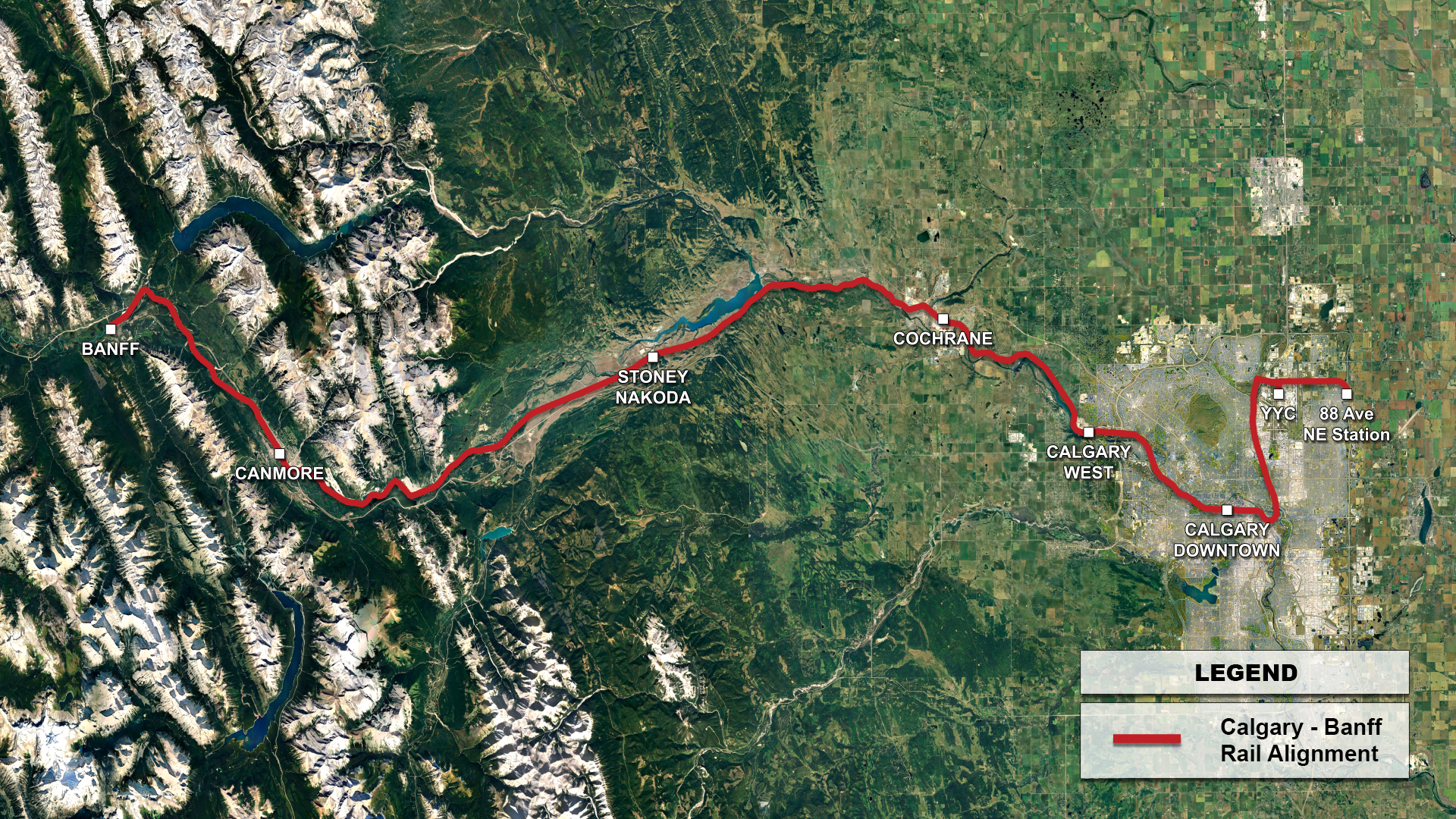Project Status
What is the history and timeline of the CABR Project?
What is the current status of the project?
Has CABR been approved by the province?
Has CABR been approved by City of Calgary?
What does the Minister of Transportation 2023 mandate letter say? (our emphasis)
What needs to happen for Government of Alberta to approve the CABR Project?
Has the Government of Alberta progressed CABR quickly to date?
What is the Airport Connection Rail Study?
Is CABR part of the Airport Connection Rail Study?
How important is the MoU between Liricon and CPKC Rail?
Alignment & Design
What are all the train stops between Calgary Airport and Banff?
How will the location and design of stations be determined?
How will the train be powered?
Why isn’t the train powered by electricity?
What is the difference between a brownfield and greenfield project?
Why doesn’t the train go to Lake Louise?
Support for CABR
What do Albertans think about CABR?
What does the Bow Valley Corridor Alliance think about CABR?
What do the indigenous communities think about CABR?
What does the business community think about CABR?
Who are the proponents of CABR?
What is Canada Infrastructure Bank (CIB)?
Why shouldn’t government just build and operate CABR?
What are the precedents for the CABR Project?
Public transit is experiencing many issues at the moment – why will CABR be different?
Economic Benefits
Who receives the economic benefits?
Is the cost-benefit ratio for CABR strong?
Timeframes
How long will CABR take to build?
What are the advantages of using the CPKC Rail Corridor?
Development Costs
Who has paid for all the work that has been done on the project to date?
Who normally pays for the development costs of an infrastructure project?
How much will the Design Phase cost before a final investment decision can be made on the CABR project?
How much is City of Calgary and other municipalities being asked to pay?
Delivery Mechanism
How are public transit projects funded and procured in Canada?
What is a public-private-partnership (P3)?
What’s an unsolicited proposal?
What’s the requested Government of Alberta support?
What is the Federal Government’s support?
What is the Municipal Government support?
Funding & Financing
What is the construction cost of CABR? How much will it cost to construct the rail line and all the stops along the way?
How is the train and rail line being funded?
What is a public-private-partnership (P3)?
How much will taxpayers have to pay for the construction of the train?
How much equity financing will Liricon/Plenary contribute?
How much money will Liricon/Plenary make from the CABR project?
Why does the Government of Alberta need to make a commitment to long term performance payments instead of making an upfront contribution to construction costs?
Why can’t a tourist train be funded entirely by the private sector like the Rocky Mountaineer?
How much will it cost annually to run and maintain the train once operational?
How much will taxpayers have to pay each year the train is operational?
Is the Alberta taxpayer responsible to repay the CIB loan?
How does the maximum $30 million per year of requested performance payments compare with other public transit projects?
Service Levels & Fares
How often will the train run?
How much will it cost to ride the train?
Will discounts and transit passes be available?
Will I be able to take bicycles, skis, camping gear and other heavy luggage on the train?
Where will the train station be located in Banff?
Once dropped off a the Banff Train Station, how can I be transported to various destinations (ie. downtown, resorts, Norquay, etc.)?
Will there be an additional cost for other transportation modals once in Banff?
Why is Exshaw excluded as a stop?
There needs to be a stop at K-Country, Hwy 40 on the east side of Hwy 1; there’s already an off-ramp to the Morley Reserve and it would link public transportation, hopefully, to shuttle tourists/Calgarians to everything heading into the park.
Environmental
The Y2Y (Yelowstone to Yukon Conservation Initiative) published a critique of early plans for CABR entitled “What’s Missing from the CABR Proposal?
How will wildlife and the landscape be protected during construction?
Will CABR worsen visitor numbers and congestion in Banff National Park and Kananaskis Country
What effect will CABR have on Banff National Park emissions?
Will CABR reduce emissions through hydrogen trains?
Are hydrogen trains commercially practical?
How will CABR mitigate regional affordability and workforce challenges?
Do You Have a Question?

Let us know. We’ll get back to you and update this page.
By submitting the form you agree that your message may be shared on our website and social media. You will also be added to our email list which you may opt out of at any time.

